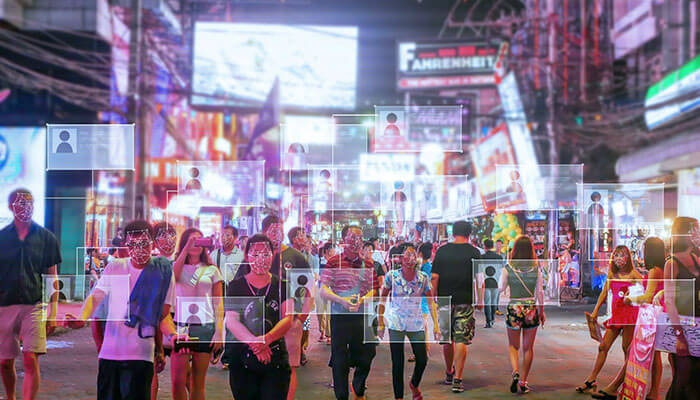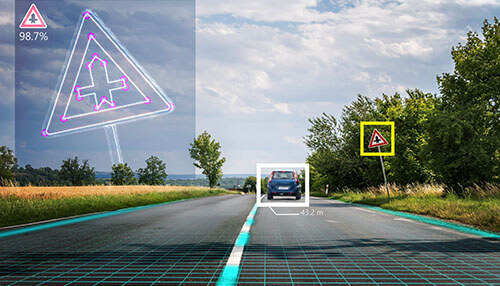Computer systems can’t inherently detect, classify, and identify images, unlike humans. However, technological advances have made these tasks possible through computer vision. If you’re curious about the subject image annotation, you’ve come to the right place.
As one of the many branches of artificial intelligence, computer vision relies on supervised machine learning models to see, identify, and process information from visual inputs. It mimics how a person reacts when looking at stimuli.
Prominent manufacturing companies, like cars, drones, and medical equipment, have integrated this technology into their products. While an emerging field, the sector’s value is by no means mediocre, estimated at USD 11.7 billion in 2021. The sector could reach USD 21.3 billion by 2030 if the industry grows at a compounded rate of 6.9% starting this year.
Read on to learn more about image annotation, starting with the most obvious question.
What is image annotation?
Image annotation refers to processes that include labeling images that typically start with human inputs and an image annotation tool platform. The tool facilitates adding information to the digital image, which is then processed by machine-learning algorithms that function on deep learning.
This process creates metadata, telling the machine which objects are there. Labeling can also include supplying information about how things in the image are related. Image annotation is the most important task for preparing a machine-learning model for computer vision. Simply put, it allows the machines to see and process images.
How does it work?
Deep learning often runs on artificial neural networks or ANNs. This model works similarly to the nerves in the human brain, enabling machines to adjust and adapt their outputs like humans. Its subsector CNN (Convolution Neural Networks) is often used in solving computer vision-related problems.
With high-quality data and the right platform to train it, the model can identify and classify features and objects, and then generate descriptions based on how it was taught.
Such is the importance of artificial neural networks(ANNs) in building the foundation for machine learning models and other artificial intelligence platforms.
Different types of image annotations
Machine learning engineers and team members use different annotation types for specific projects. Below are the most common methods for labeling digital images:
1. Bounding box annotations
Annotators draw a box around any objects they want to label within a specific image. It’s often used to train algorithms to recognize things like cars, people, animals, plants, and many others.
Labeling may include a single target object, like all the motor vehicles in an image. Sometimes, it can consist of several or all items in the photo. For example, besides recognizing automobiles, the processing method may include other objects in an image. Taking the model above, besides cars, the team can also label road signs, traffic signs, pedestrians, and others.
More advanced bounding box annotation includes cuboid or 3D labeling, which shows the estimated depth or distance of the target objects from one another.
2. Polygon annotation
In annotation, the boundaries of an object must be identified to allow the algorithms to label items more accurately. Unfortunately, target objects with irregular shapes can be challenging to place in a bounding box. A polygon annotation is a good solution, as it enables all edges of an item to be presented correctly.
Polygon annotation can be used in facial recognition applications, among many others. It’s similar to what your social media application does when you upload a photo and choose to tag your friends automatically.
3. Image classification
This type of annotation relies on algorithms to identify and classify images properly. The machine is programmed to associate one object and label it similarly in this method.
This type is useful when looking for an application that categorizes various items correctly, like species of a living organism. Image classification can also be used to spot abnormalities within the human body, as is the case for medical imaging systems. The key to successful image classification is feeding high-quality data into the model and training it to categorize images more effectively.
4. Polylines annotation
This annotation method refers to putting labels on images with straight and curved lines. This annotation method helps set boundaries and detect road lines and sidewalks, making it useful in traffic and autonomous vehicle applications. Machine learning algorithms under this model can train robots to place or pack items neatly in a row in manufacturing lines.
5. Semantic segmentation
Instead of focusing on objects, the team can label digital photos using pixels. That’s why it’s also called picture pigmentation.
In this ML training process, the annotation team will receive segment labels instead of object names and tags. Each segment is assigned a specific color, and annotators are supposed to draw around them, identify the pixels, and place the appropriate tags or labels.
Image annotation industry applications
Computer vision is used in several industrial applications worldwide. The market is divided into hardware, software, and services. Of these subsectors, hardware is projected to get the lion’s share of the revenues of these subsectors. As manufacturers create more advanced products, annotators can boost computer vision accuracy to accommodate more industrial functions such as:
- facial recognition
- autonomous vehicles
- crewless aerial vehicles or drones
- manufacturing robots
- cybersecurity applications
- security and surveillance systems
- healthcare imaging systems
- eCommerce and retail customer segmentation
This list isn’t exhaustive as the use of computer vision continues to expand.
Conclusion
Adopting computer vision in functions like cybersecurity applications and healthcare imaging systems entails a substantial investment, so it’s important to get it right the first time.
An image annotation project is crucial in any computer vision project as it trains the machine learning models. Training datasets should be accurate and high-quality for a successful ML model. More importantly, the project team must know the right annotation tools and methods to produce the best outcomes.
References
1. https://www.techtarget.com/searchenterpriseai/definition/convolutional-neural-network
2. https://www.techopedia.com/definition/5967/artificial-neural-network-ann
3. https://www.geeksforgeeks.org/how-to-draw-bounding-boxes-on-an-image-in-pytorch/?ref=gcse
4. https://www.cnet.com/tech/tech-industry/facial-recognition-is-getting-better-at-making-matches-around-face-masks/



